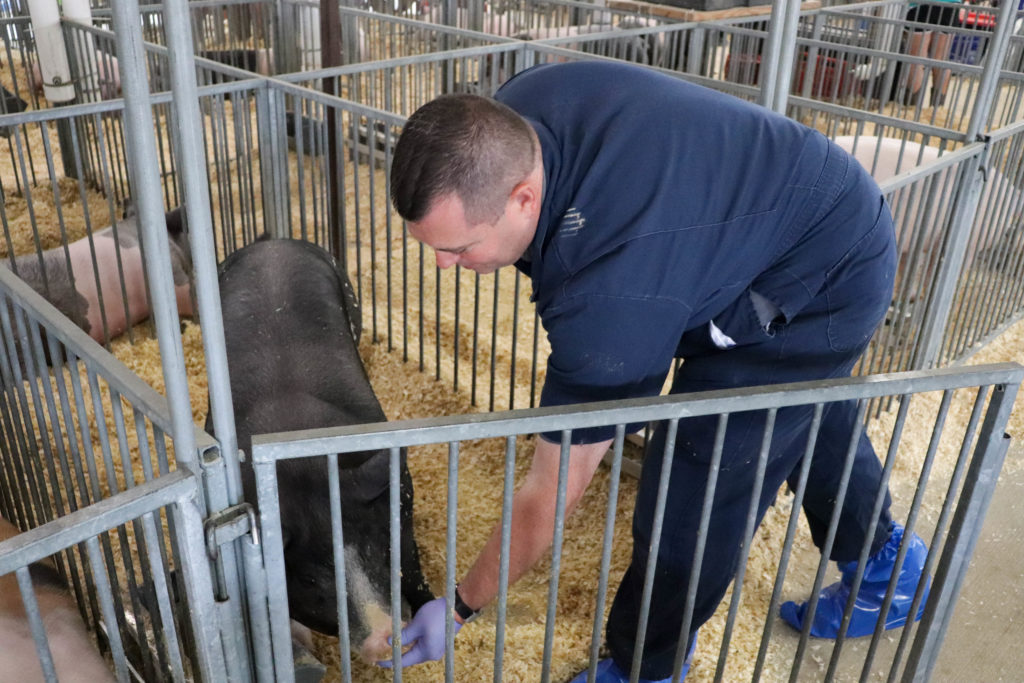According to the Centers for Disease Control and Prevention (CDC), the deadly 2009 flu pandemic, which originated in pigs, resulted in 60 million cases of the flu in the United States and more than 12,000 deaths in humans. After this outbreak, Dr. Andrew Bowman and his team at Ohio State’s College of Veterinary Medicine, began looking to the fair circuit for answers. They travel to more than 100 fairs each year, swab the snouts of exhibition pigs, then take the samples back to the lab to identify new strains of the flu.
“We get pigs from lots of farms in one spot, and so we can do surveillance rather efficiently instead of going farm to farm to find out what flu strains are out there,” said Bowman, who is also an associate professor of veterinary preventive medicine. “If we’re able to detect that there’s likely influenza in the samples, then we’ll try to grow that virus and use that research to help offer a more broadly protective vaccine.”
For Bowman’s Animal Influenza Ecology and Epidemiology Research Program (AIEERP) team, fairs are an ideal setting to identify these new viruses. The commingling of pigs from numerous sources raised under varied management programs provides an ideal environment for the virus to spread among animals, and potentially from pigs to humans.
Although there’s a risk of catching these viruses from the animals at the fair, there are precautionary steps attendees can take to prevent exposure. Bowman recommends frequent hand-washing, as well as enjoying fair food and drinks outside of the barn area. He also suggests that anyone at high risk, such as infants and those with compromised immune systems, should observe the animals from a distance.
The CDC estimates that the flu has resulted in between 9.3 million and 49 million illnesses each year in the United States since 2010. It’s challenging for health officials to predict what the flu season will look like from year to year.
“The flu virus is always changing, and so, with the current vaccine technology, we’re always playing catchup. We have to make the best guess for what we’re going to have circulating and try to match that the best we can,” Bowman said.
While his team works on this research and surveillance to improve vaccine effectiveness, Bowman said getting an annual flu shot is still the best way for people to prevent illness.
###




